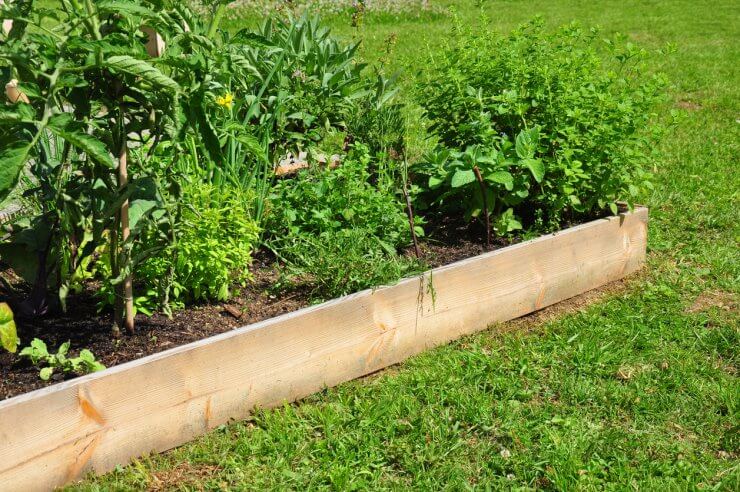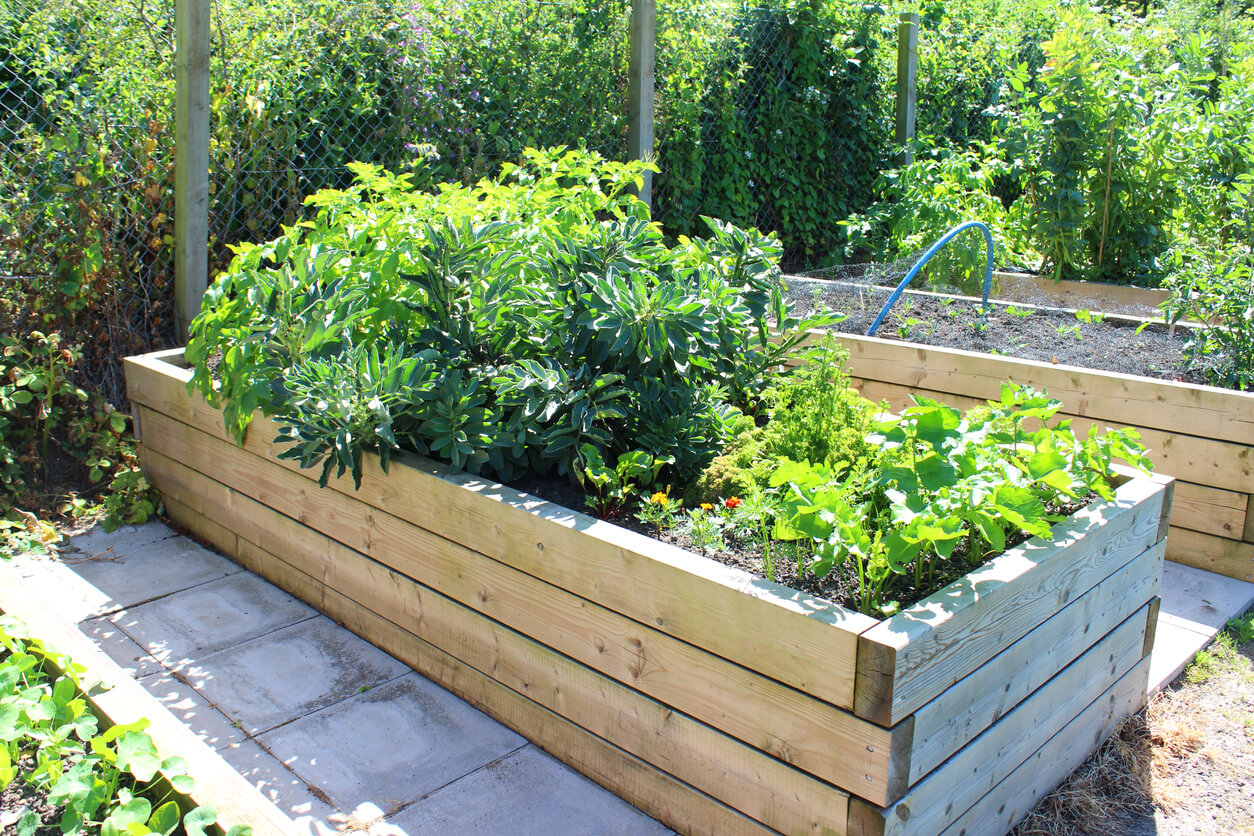
Ah … the infamous clay soil. The nemesis of gardeners everywhere. When it comes to the loose, well-drained soil that gardens love, clay soil is the opposite. Tender roots have a hard time cutting through it, and water pools in clay soil, leaving you with waterlogged plants. Alas, many of us gardeners have to figure out how to work with what we have. So, let’s talk about building a raised bed over clay soil.
So many gardeners deal with less than ideal soil conditions, and a raised bed can be the solution. For that matter, you can create a raised bed on top of your driveway or a concrete patio, which makes me think that clay soil is no match for your desire to have a garden!
Discover 7 top tips for growing, harvesting, and enjoying tomatoes from your home garden—when you access the FREE guide The Best Way to Grow Tomatoes, right now!

Build a raised bed over clay soil and enjoy the bounty of a beautiful garden
I get that clay soil isn’t great, but when has that ever stopped a determined gardener? If you want to garden, you can. You can build a raised bed over clay soil just as easily as you can over rocky soil, depleted soil, or any other poor soil situation.
Best of all, there’s not much to it.
One of the first things to do is decide what you want to grow. That will determine what kind of raised bed you want to build or buy. For example, if you plan to grow tomatoes or corn, you’ll need something to accommodate those deeper roots. If you want to grow herbs and leafy greens, you can opt for something more shallow.
Next, level the surface as much as you can. When you build a raised bed over clay soil–or any soil, really–starting with a level surface will help with the even distribution of water and fertilizer. Plus, it’s just easier to work with.
There’s also the question of whether to use landscape fabric or some barrier at the bottom of your raised bed. Barriers can be helpful if you have toxic soil, but if we’re talking strictly about clay soil, there’s no real advantage. It’s also an added expense, so you can likely skip it, unless there’s some other compelling reason to include it, like especially vigorous weeds.
At this point, there’s not much different about building or installing a raised bed over clay soil than there is anywhere else. It can be as simple or as elaborate as you want it to be.
Here are a few tips for creating a successful raised bed garden:
- Choose a space with plenty of sunlight. Most vegetables need a full day of sun.
- Buy or mix soil to fill your garden. We go with a mix of about 60% topsoil, 30% compost, and 10% potting soil. That said, many people go with a more simple mix of 50% topsoil and 50% compost, but that depends on you making your own compost since it can be expensive to buy. I’ll also mention that you may want to mix your soil before you put it in your raised bed. Trust me on this one!
- Consider a layer for drainage. This is somewhat dependent on the size of your garden beds, but a thin layer of gravel or sticks at the bottom of your raised bed might help a little with drainage if your clay soil is especially compact. The advantage of old wood and sticks is that they will gradually break down and add nutrients to the soil. In fact, keyhole gardens rely heavily on this technique and it works wonderfully.
Have you planted a raised bed over clay soil? Did you notice anything that other gardeners should pay attention to?
Note: Food Gardening Network contains links to affiliate websites, including Amazon and Rakuten Affiliate Network, and we may receive a commission for any eligible purchases made by you through links on this page. Any reviews are based on honest reviews of the products.
Discover 7 top tips for growing, harvesting, and enjoying tomatoes from your home garden—when you access the FREE guide The Best Way to Grow Tomatoes, right now!





Excellent article, I would suggest rabbit wire on the ground to prevent gophers.